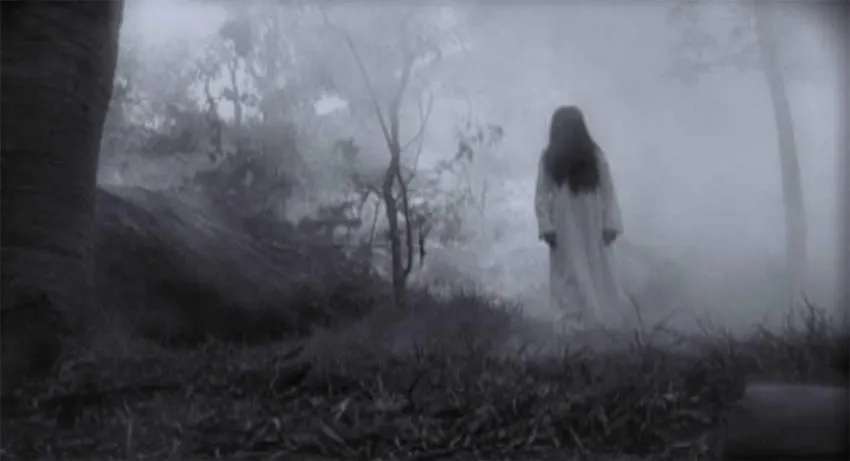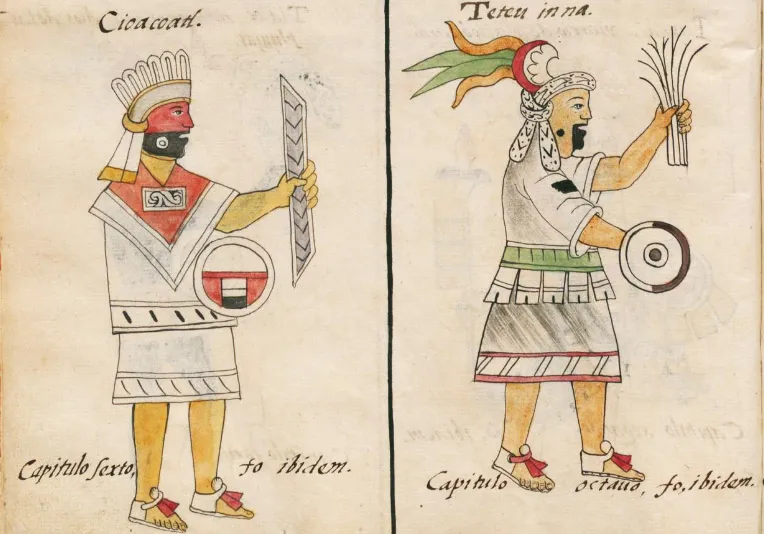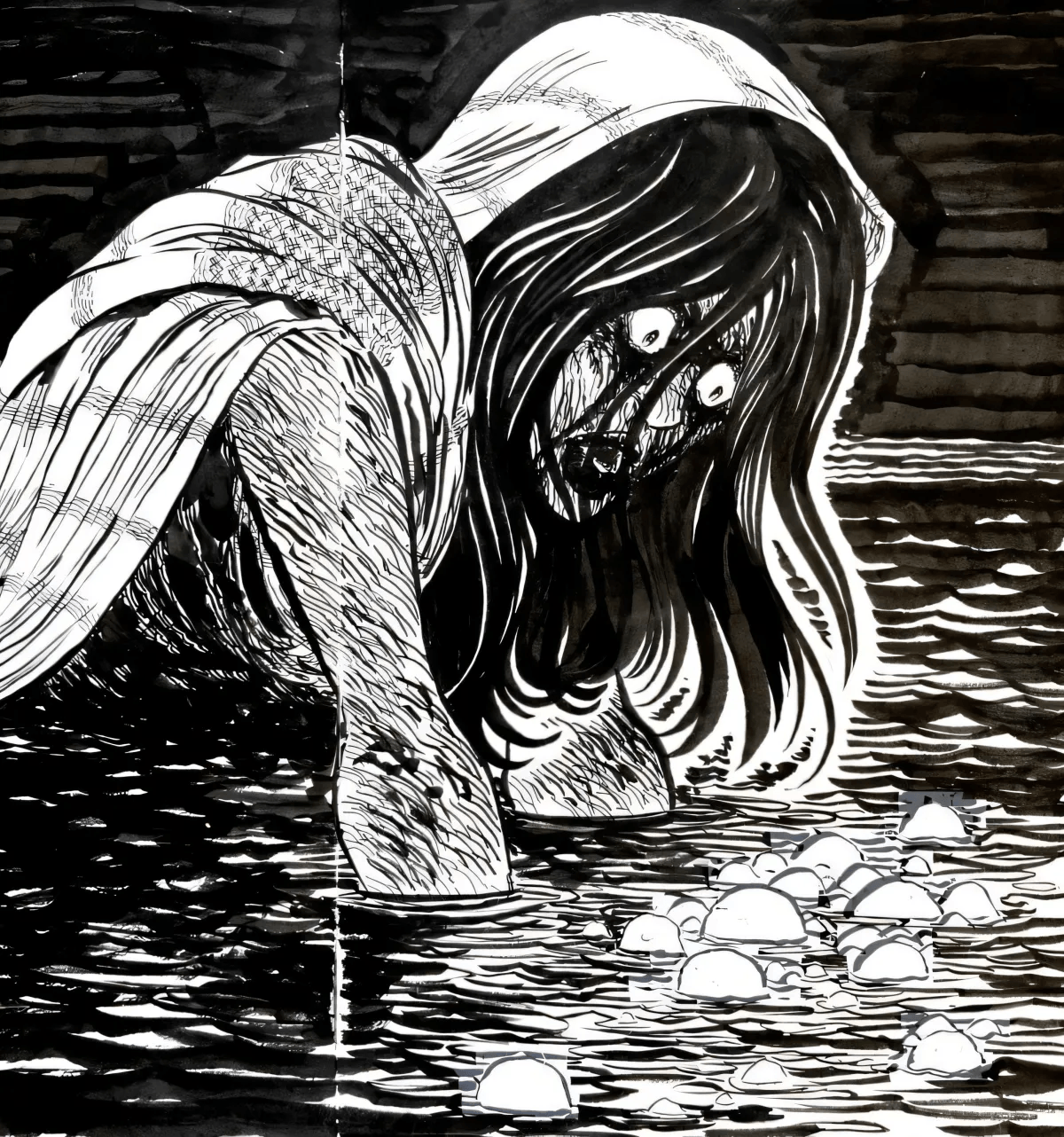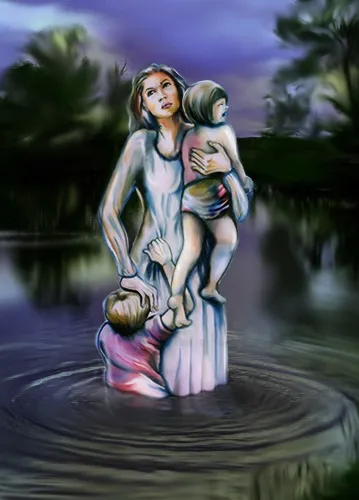The Best Version Of The Legend Of La Llorona
Growing up, I knew La Llorona as a wailing woman who drowned her children. My dad would dismiss the stories saying the cries heard in Mexico were simply cats.
He told me this the first time I was exposed to her story, seeing no need to scare me into behaving since Catholicism did that too much- which he tried limiting my exposure from.
But as much as I want to credit him for my logical and realistic mind, I’m here to tell you which version of La Llorona is best to tell.

La Llorona Variations
Throughout South America, Mexico, and the Southwest of the United States there are regional variations of La Llorona. Yet despite them, the most famous tale from them is that La Llorona was a beautiful peasant woman who married a rich ranchero. They’re said to have lived happily with children until her husband brought home another woman and condemned her and his children back into poverty.
It is said that out of revenge, she drowned her children in a river, but became so sick with regret and grief she killed herself to search for her children in the afterlife.
However, because her sin banned her from heaven, she wonders in purgatory for her children. Because of this, Hispanic children are warned of her cries and specter since she takes them thinking they are her own.
Other versions say she killed her children to be with a rich man since he didn’t want a woman with children. In another, her children drowned in a river from her lack of attention and care since she’ll go dancing with men.
But there’s one that is very different since they say her children died in a house fire set by the priest from her wedding ceremony. It’s said that it was out of revenge from her going back on her agreement to give him her first child as payment for her wedding.
Suffering from burns herself, her face got disfigured and became known as “The Donkey Lady” by the townspeople. But nevertheless, she wastes away by the riverbank mourning her loss.

The Mythological and Historical Origins
While there is no distinct evidence of where La Llorona originates from, it is speculated by historians that the story has Aztec roots. In the 16th century when the Florentine Codex was complete, there was an Aztec goddess called Cioacoatl that’s described as a woman that appears in white and walks at night weeping and wailing. Very similar to La Llorona, her appearance however was seen as a bad omen foretelling the colonization of Mexico.
Though there are others that speculate La Llorona’s origins are connected to La Malinche, or aka, Hernan Cortes' Indigenous interpreter. It is said that La Malinche was a Nahua woman and daughter of a chief, who was sold into slavery after her father died.
But because of her ability to speak Mayan and Nahuatl, she became Cortes's personal translator. Her help then led to the success of Mexico’s colonization, making La Malinche notoriously famous for her betrayal of Mexico.
But how is she connected to La Llorona? Because she was Cortes interpreter, it is said that they fell deeply in love and had a child named Martin. During this time, stories of her betrayal that revolve around her wicked deeds flew across the Aztec Empire, making her a monster to them. One of them was a story about her drowning her son.
It was told that after learning about Cortes’s plan to go back to Spain with their son Martin, she drowned him in a river. Though, we know that this isn’t true since Martin went on to live a full life.
Historians also don’t believe that La Malinche was in a romantic relationship with Cortes since there’s little evidence of any intimacy, so they speculate that she was most likely in an abusive and controlling relationship.
With that said, this history belongs to Hispanics’ Indigenous roots, showing it’s not a white story with a white background. Yet Texas has the audacity to have a version of La Llorona as a settler story depicting Native Americans as savages.

The Colonial Version
Apparently, a settler village in San Antonio, Texas was attacked by a nearby tribe of Native Americans. A woman who saw her husband get brutally murdered decided to save her children from the same fate by drowning them in a river.
Once the Natives got to her, her children were dead, yet she saved her own life by scaring them with a blood-curdling scream. She then withered away as she cried for her children, and she continues to in the afterlife by Woman Hollering Creek.
If it’s not noticeable by now let me give it to you straight- this version is racist. From all the versions that are centered around Hispanic people, the one from Texas somehow involves a white settler with a backstory that involves an attack from Native Americans, even though the story has indigenous roots about an indigenous woman.
It makes no sense for them to whitewash it, but it’s still colonial and racist since they depict the victims as white and Native Americans as savage murderers.
La Llorona Reimagined
However, despite this, the Hispanic community is reimagining La Llorona in Chicano Literature. Hispanic women writers have been retelling the story of La Llorona with more justifiable reasons that align with women's struggles, while still allowing it to be a cautionary tale. But from among them, Luz Alma Villanueva spins a special tale since she reimages the version from Texas.
In her novel, Weeping Woman: La Llorona and Other Stories, Villanueva focuses on rape, incest, and childhood sexual abuse by portraying daughters experiencing this sexual violence. In La Llorona, the main story was on childhood sexual abuse.
And in it, the character Luna gets abused at night at the park by a man who claims to be a policeman. At that moment, Luna hears for the first time the cries of La Llorona, representing her as a caring mother since Luna’s biological mother is neglectful. In fact, after being examined that she was okay, her mother tells her, “Well, nothing happened to you, so you can stop that trembling act.”
Though, Luna had a grandmother who acted as her real guardian and cared about her. Because of this La Llorona is portrayed more as a figure who mourns the injustice women go through, such as sexual violence since it's said that she mostly kills men, making the story of La Llorona a cautionary tale of predatory men.
Yet aside from this, the actual story told about La Llorona within Villanueva’s La Llorona is shown and claims the story as a Native American tale. In fact, Luna is told the story of La Llorona by her grandmother Isidra who is described as Native American.
She tells her that La Llorona cries for her children because she had to turn her children into fish when “the terrible men from the great ocean came.” This is obviously the sign of the beginning of colonization. This is further supported when Isidra says, “You see, Luna, she saved her daughters from the terrible men, but her sons stayed and fought and died.
They were real Indians then, and the gringos just looked like plucked chicken to them...The Indians knew they were evil when they killed even the children for nothing, sending them to the dark side of the moon.”

In addition, La Llorona is shown as a piece of Native Culture within the story when Isidra says, “Since coming to this country… I have yet to hear from her… Too many gringos here, mi Luna, and no room for La Llorona,” showing how a lot of Native stories are particularly lost from colonization in the United States.
The same is said about Native spirituality since Isidra argues with Luna’s mom by saying God will punish her despite revealing her belief in shapeshifting and the dark side of the moon. This is because a lot of Catholic beliefs were inserted into their Native spirituality when Europeans made contact.
In fact, Isidra is from the Sonoran Desert, which is the area where the Yaqui Tribe lives. It’s also the tribe my grandmother was from and a lot of their beliefs are heavily rooted in Catholicism, at least from what I know as an outsider.
Villanueva’s grandmother was also Yaqui, who she grew up with, showing her life was similar to Luna’s. Because of this, it is quite possible that the story of La Llorona told by Isidra was originally told to Villanueva from her Yaqui grandmother, which supports La Llorona as a Native story.
But regardless of the story is true or not, because I have Yaqui ancestry, this is a version I would prefer to pass on since it serves as a reminder that Hispanics are Native American, and calming that identity back is, what I think, an important first step towards decolonizing our minds and gaining our power back.
However, it’s still as powerful to tell the story even if you don’t claim the Native identity or you have a different ethnicity. When you tell La Llorona through this Native narrative, you’re recognizing the colonization and genocide that also occurred beyond the United States and hence recognize that Hispanics are Native American.
The Hispanic and Latino identity have been made to erase our Indigeneity, but having others also recognize it, shows the United States that Natives aren’t dying out they are alive and thriving resistance.
Opinions and Perspectives
Its incredible how these stories survived despite attempts to suppress Indigenous culture.
Your analysis really helped me see this familiar tale in a completely new light.
Stories like this remind us that our cultural heritage is still very much alive.
The way different versions reflect local concerns while maintaining the core message is fascinating.
This really shows why we need to preserve and protect Indigenous storytelling traditions.
Hearing about the Yaqui perspective made me rethink everything I thought I knew about this story.
The contrast between your dads rational explanation and the cultural significance is really interesting.
I used to fear these stories, but now I see them as a way to understand our history and culture.
Its striking how this story continues to resonate with modern issues of justice and protection.
The transformation from vengeful spirit to protective force really shows how stories can evolve positively.
Im glad were having these conversations about reclaiming our cultural narratives.
Learning about these different versions helps me understand why my family told it the way they did.
The way you connected this to broader issues of cultural identity and resistance is really powerful.
I think its beautiful how different communities have adapted the story while maintaining its cautionary nature.
Never thought about how the story changes based on who's telling it and why. Really eye-opening perspective.
The lasting impact of colonization on our storytelling traditions is really evident in how this tale evolved.
Understanding these cultural stories helps us connect with our ancestors experiences.
I appreciate how modern retellings are making the story more relevant while respecting its origins.
Its fascinating how this story specifically survives in areas with rivers. The geography really shapes the telling.
Reading about the Aztec origins makes me wonder what other pre-colonial stories we've lost over time.
The connection between La Llorona and womens struggles throughout history is particularly meaningful to me.
I remember feeling so conflicted about these stories as a kid. Now I understand their deeper cultural significance.
Your point about decolonizing our minds through storytelling is powerful. These narratives shape how we see ourselves.
The way our parents tried to protect us from these stories actually made them more intriguing to me.
This analysis opened my eyes to how these stories can be vehicles for reclaiming cultural identity.
Comparing the colonial version to the Indigenous ones really highlights how stories can be weaponized against communities.
The variation between versions really shows how stories adapt to serve different communities needs while keeping the core message.
Anyone else find it interesting how water plays such a crucial role in almost every version? Must have deep symbolic meaning.
Makes me think about how many other Indigenous stories have been whitewashed or completely erased over time.
The story really hits different when you understand its role in preserving Indigenous memory and resistance.
Actually, that part about Martin going on to live a full life just gave me chills. Shows how historical facts can contradict popular legends.
I love how Villanueva transformed the narrative into something that addresses modern issues while honoring its origins.
The version about the priest causing the fire is completely new to me. Never heard that variation before.
What strikes me most is how this story survived centuries of colonization and still maintains its power to teach important lessons.
The Catholic influence on these stories is so interesting to me. Its like watching two belief systems merge and evolve together.
Growing up in New Mexico, our version was slightly different. We were told she specifically targeted children who disobeyed their parents.
I find it absolutely wild that people tried to connect this to La Malinche. Seems like another way to villainize women in history.
Really appreciate learning about the Yaqui perspective. We need more Indigenous voices sharing their interpretations of these stories.
The interpretation of La Llorona as a protector of women and children against predatory men is such a powerful reimagining of the traditional tale.
Interesting how your dad tried to rationalize it as just cats. My parents did something similar, but these stories still shaped our cultural understanding regardless.
The Texas version really bothers me. It completely erases the Indigenous roots of the story and turns it into harmful propaganda.
I never knew about the connection to Aztec goddess Cioacoatl. That historical context adds such a deeper meaning to the legend.
My grandma used to tell us the version where she drowned her kids because of the rich man. It scared me so much as a kid that I wouldn't go near rivers at night!
I've always found it fascinating how La Llorona's story changes across different regions while maintaining its core elements. The version about her being a protective force rather than just a vengeful spirit really resonates with me.
